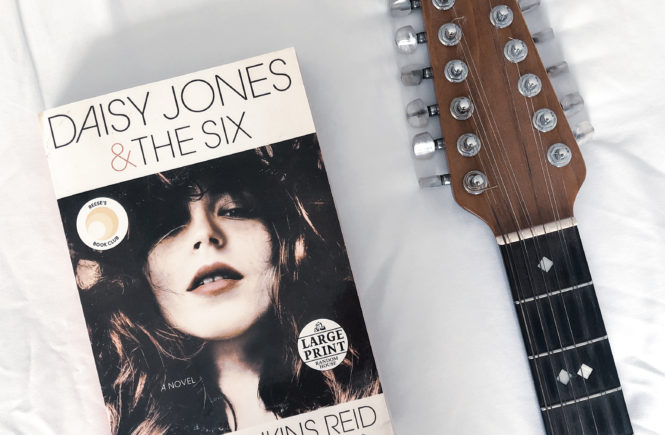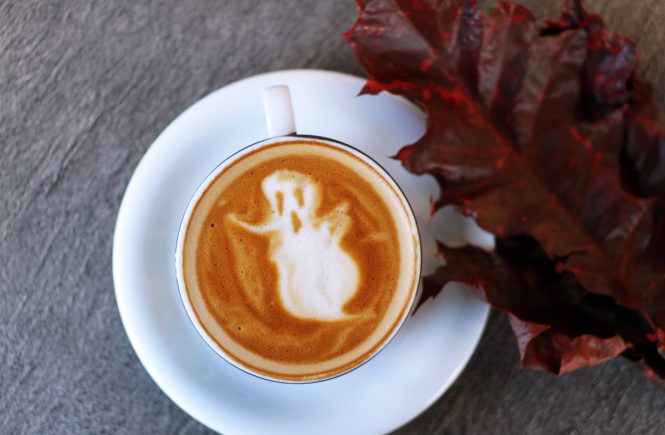Image by Madeline Leesman
Daisy Jones & The Six by Taylor Jenkins Reid is one of the most discussed books of 2019, and rightly so. This novel has graced the front shelves of bookstores everywhere due to becoming a New York Times bestseller. It received Reese Witherspoon’s seal of approval as it made the list for her official book club shortly after its release. Not to mention, Witherspoon will serve as executive producer of the upcoming television series based off the book under the Amazon Studios umbrella.
Needless to say, Daisy Jones & the Six is recognizable in the literary sphere. As is Taylor Jenkins Reid, who previously penned The Seven Husbands of Evelyn Hugo, a story highlighting the scandalous, riveting life of a fictional silver-screen star loosely based on real-life actresses Elizabeth Taylor and Ava Gardner. The Seven Husbands of Evelyn Hugo is reportedly being made into production as a television movie.
While I’ve not read Reid’s previous novels (they’re next on my list!), I felt compelled to break into Daisy Jones & The Six and see what the hype is about.
Daisy Jones & the Six is an oral history interview-style novel that details the rise and fall of one of the greatest (fictional) bands of the 1970s. The band dominated the charts and redefined rock ‘n roll before abruptly breaking up smack dab in the middle of their legendary world tour, never to be seen or heard from together again. Nobody knows why, until now.
We begin with Daisy Jones, a flower child/rock ‘n roll groupie-esque teenager raised in the Hollywood Hills under almost-absentee, hippie parents. The Six is a rock ‘n roll band founded by brothers Billy and Graham Dunne, with roots stemming back to their hometown of Pittsburg, Pennsylvania. Both separately land record deals at Runner Records in Los Angeles in the early 70s. Both release semi-successful debut albums. Both play shows for their respective albums. But, both Daisy Jones and The Six plateau in their first couple years in the music business. The missing ingredient to skyrocket both sides into superstardom is each other.
Perhaps Runner saw this as an opportunity. During The Six’s recording sessions for their second album, SevenEightNine, producer Teddy Price makes arrangements for Daisy to make an appearance as a featured artist on The Six’s track “Honeycomb.” “Honeycomb” steadily climbs the charts, surpassing anything The Six and Daisy previously release. Consequently, The Six extends an invitation for Daisy to join their upcoming tour as the opening act.
Ticket sales soar once Daisy joins the lineup. Holdover shows are quickly added to the queue of an already staggering list of tour dates. The abrupt escalation of the band’s popularity captures the attention of Rolling Stone, where renowned music journalist Jonah Berg is sent on assignment to The Six’s concert in New York to scope things out. In his editorial, Jonah describes the undeniable electricity between Daisy and The Six, predicting they will cross paths permanently at some point.
Jonah is not alone is his way of thinking. In fact, several people have alluded to the idea of Daisy and The Six joining forces for the third go-round of recordings for The Six. There are numerous superficial and logistical motivations behind the merge, but the overarching factor is the success the artists and executives will experience if the two work as one. Of course, this isn’t without some (or lots of) drama.
Daisy is a hot mess, to say the least. From age 14 onward, Daisy spent her days sneaking into clubs, getting sunburns and taking psychedelics. Daisy lacks any and all musical talent aside from a decent singing voice accompanied with her phenomenal good looks. Her devastatingly poor judgment lands many of her opportunities and causes her downfalls. She refers to herself as a songwriter, but the extent of her songwriting doesn’t extend past lyricism. Personally, I imagine Daisy’s voice sounds like a combination of Stevie Nicks and Zella Day – free-spirited, raw, and distinct.
Billy Dunne, The Six’s frontman and lead guitarist, unapologetically can’t stand Daisy. Billy is a recovering drug addict and serial cheater who derailed The Six’s first tour and upcoming recording sessions due to his drug usage and philandering. Billy’s unruly behavior landed him in rehab where he missed the birth of his daughter and her first few months of life. Now, Billy’s reformed approach to music is all-business, no-nonsense, and expects the same from his bandmates.
Daisy, on the other hand, is a drug addict. Billy feels constant temptation to relapse in her presence. He finds her lack of real musical inclination and understanding appalling. Now, with a daughter and twins on the way, and the last thing he needs is to slip back into rockstar lifestyle oblivion. The idea of someone like Daisy Jones frontrunning his band is incomprehensible.
Much to Billy’s dismay, Daisy is added to the band permanently. They officially rebrand as Daisy Jones & The Six.
Begrudgingly, Daisy and Billy spend weeks together writing songs for the band’s debut album, Aurora. The trajectory of the band’s music takes a more radio-friendly pop sound with rock n’ roll undertones, a slight departure from The Six’s previous records. However, Billy ultimately asserts full control of the record, re-mixing the entire tracklist unbeknownst to his bandmates during a six-week hiatus at the end of recording sessions. Despite any hard feelings Billy’s actions create, Runner loves the record, slaps only Billy and Daisy on an album cover, and the band embarks on a world tour.
I don’t want to include any major spoilers, but this is where the cookie inevitably crumbles. Daisy returns from break with an Italian husband she met overseas and impulsively married. He fuels her drug addiction, escalating it to heights like never before. Billy’s wife, Camila, and their three daughters join Billy on tour, presumably to keep him in line. The rest of the bandmates have their own personal struggles that contribute to its demise. Teddy, who was responsible for much of the magic on the album, drops dead from a heart attack unexpectedly. And, of course, Billy’s on the verge of falling headfirst into a relapse.
Not to anyone’s surprise, the band breaks up. Each member goes their own way, never to reunite again. And that’s the end of Daisy Jones & The Six, one of the greatest bands of the 1970s.
In case you needed clarification, Daisy Jones & The Six is not a real band. I wish it was. I even Googled it. However, I read in several interviews that this story was loosely based on Fleetwood Mac. Strangely enough, Fleetwood Mac came to mind several times as I was reading. Considering that Reid based Evelyn Hugo on a few real-life actresses, it doesn’t seem far-fetched that she’d pull inspiration from iconic, real-life bands for Daisy Jones & The Six. So, while you can’t click out of this article and open Aurora on Spotify, perhaps Rumours will suffice.




